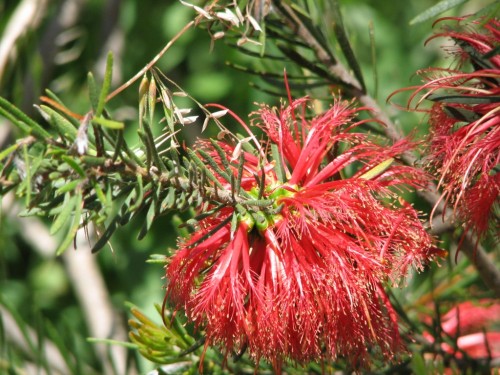These plants are good value in any garden. Some flower twice in the year. The treatment for all is the same. At the end of flowering, trim the old flowers off to prevent seed pods forming and encourage new growth. The majority will flower on the next lot of growth. The more tips, the more flowers.
Callistemon viminalis is a popular small street tree here and is a picture in flower.
Callistemon phoeniceus is a medium shrub with fiery red brushes (sometimes pinkish red).
Calothamnus homolophyllus is a small shrub with red one-sided bottlebrush flowers.
All of these grow well in alkaine soil, with reasonable drainage and of course would reach their maximum size if there was sufficient rain to push them along. They still grow well in our low rainfall area and in periods of very little rain as is the case this winter.


